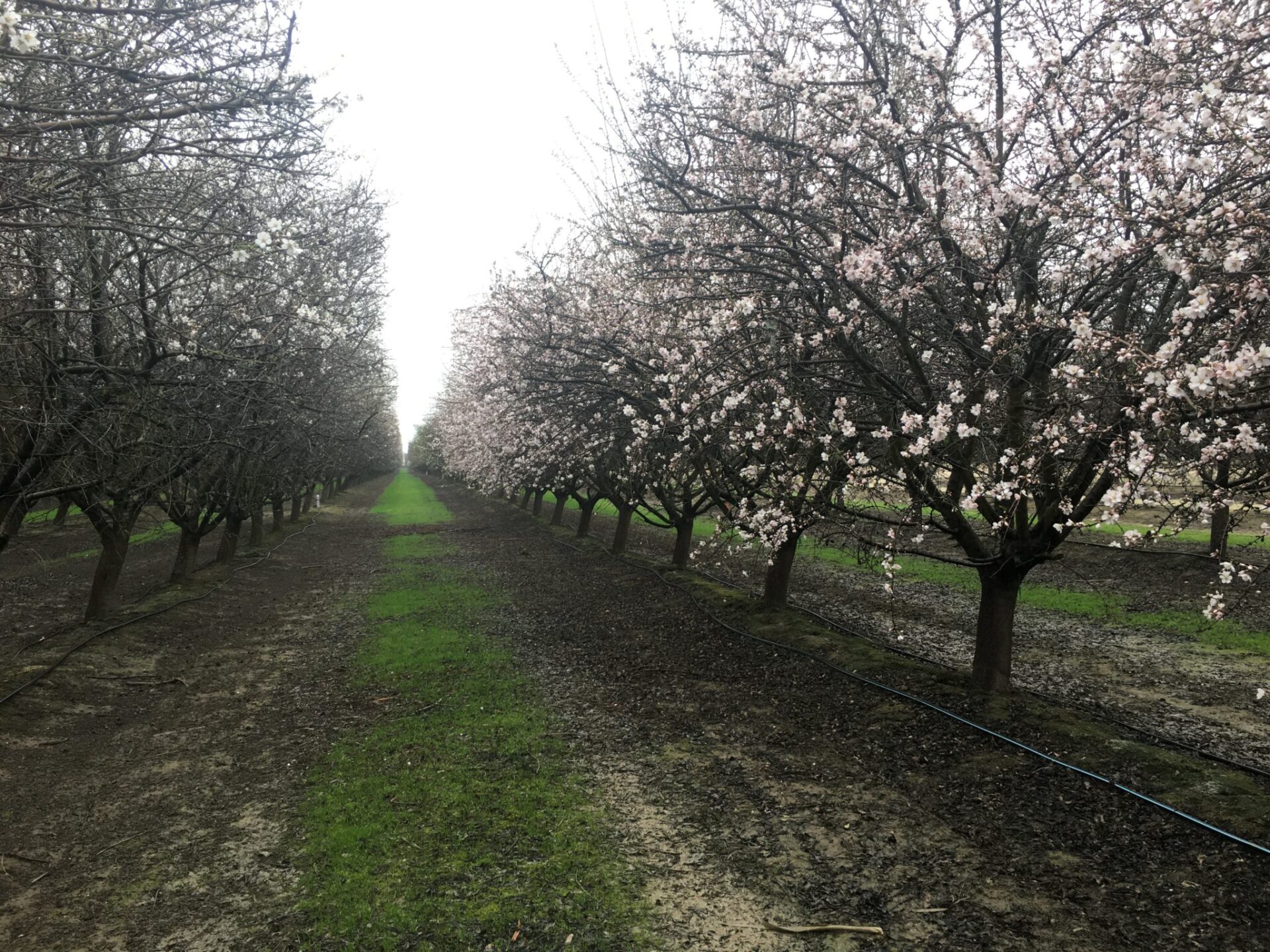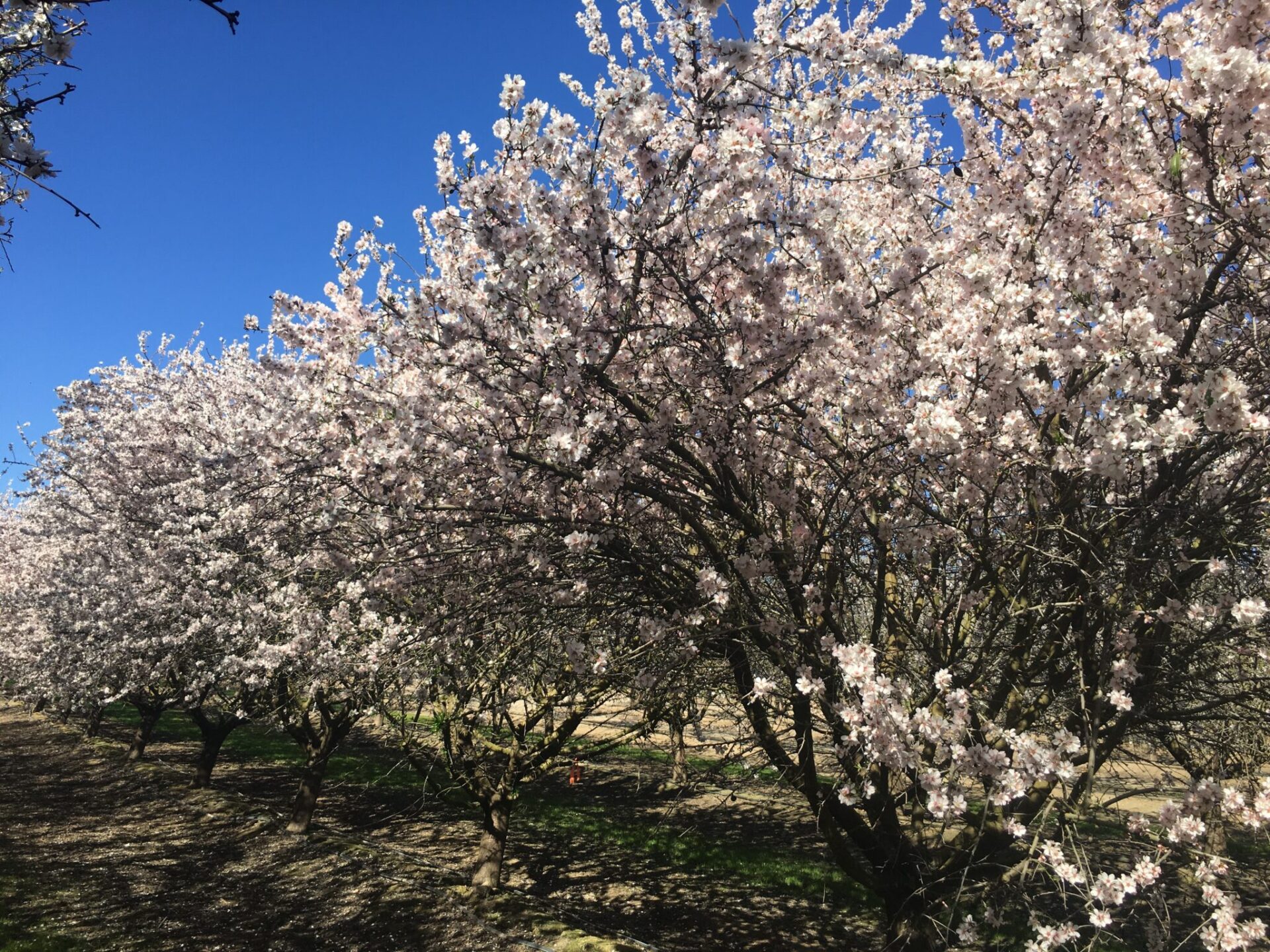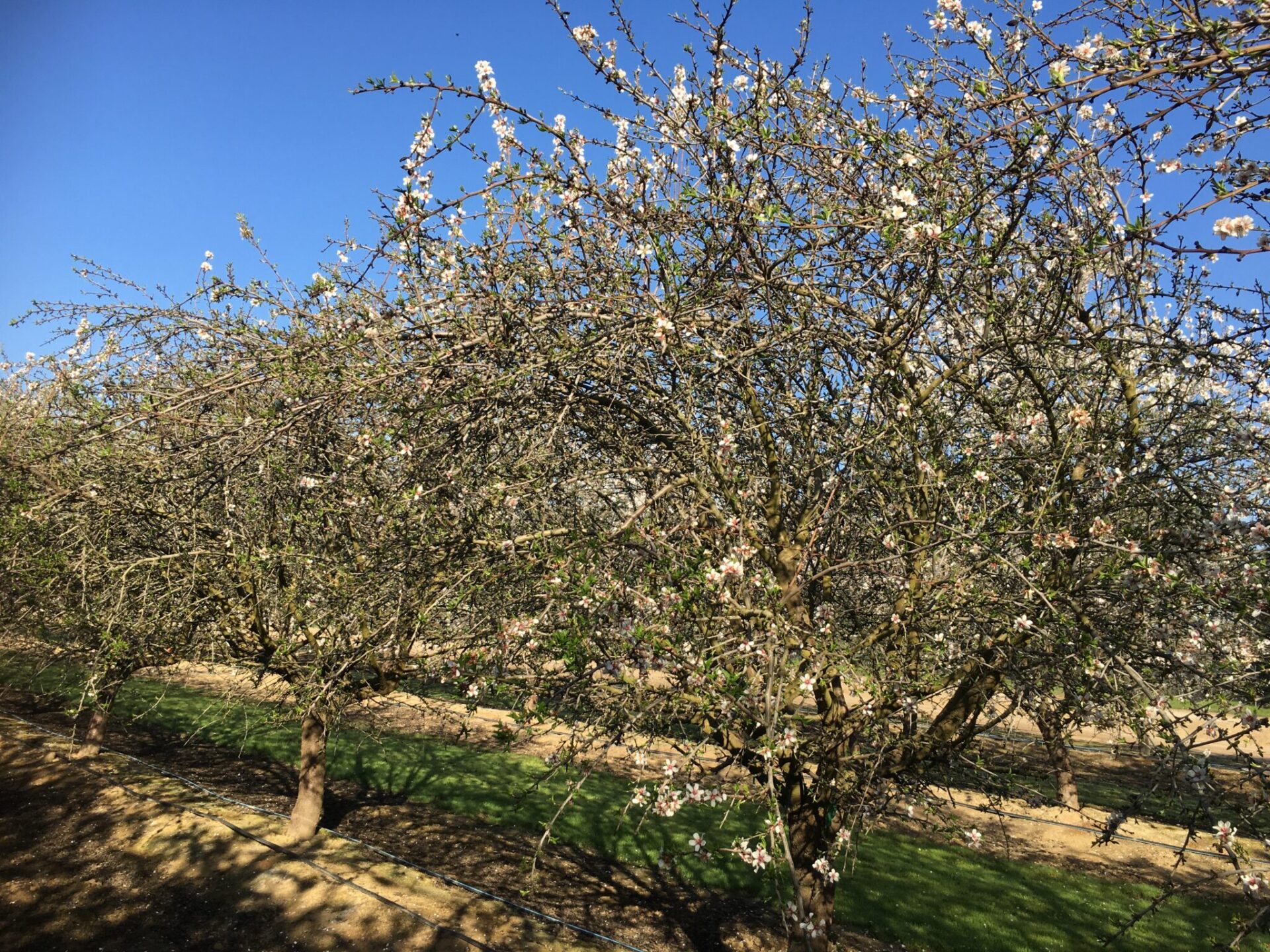
The Almond Board of California (ABC) started supporting Regional Variety Trials (RVTs) in the 1970s to create a method to test the performance of new almond varieties across the growing region and extend that information to growers. Previous and current RVTs have been designed to evaluate new varieties or selections in a semi-commercial (20 to 40 trees per variety) manner and compare them to standard varieties such as Nonpareil, Mission and currently accepted pollinizer varieties.
Due to the contribution of these RVTs, the industry has been equipped to adopt a wide range of varieties that offer a versatile supply of almond kernels and demonstrate a competitive advantage to growing almonds in California.
For instance, the first two RVTs identified good pollinizer options for Nonpareil (i.e., Fritz, Price, Aldrich, Wood Colony, Monterey, etc.) and also allowed researchers to fully document the performance of the top 14 out of 15 varieties most widely adopted in California.
In addition, RVTs have identified varieties that are more resistant to pests and diseases, such as navel orangeworm (i.e., Price and Butte) and hull rot (i.e., Monterey, Carmel and Fritz), respectively. RVT outputs have also expanded the industry’s harvesting and processing operations by identifying the Sonora group (harvested 7 to 13 days after Nonpareil), the Price group (harvested 15 to 21 days after Nonpareil) and the Carmel group (harvested 29 to 34 days after Nonpareil), among others. Finally, the investment in varietal research has resulted in the commercialization of new UC varieties in the past 20 years: Kester, Sonora, Sweetheart and Winters.
The third and current generation of RVTs started in 2014 and is already in the process of identifying top performers. For example, thanks to the current RVT and ABC’s ongoing collaboration with USDA breeder Craig Ledbetter, the industry can now add Yorizane to its variety mix. Yorizane, formerly “selection Y116-161-99,” is notable thanks to its consistent qualities, such as self-fertility, high yields and good kernel quality.
Latest Varieties and Selections
At an Almond Conference breakout session in December 2020, ABC Associate Director of Agricultural Research Sebastian Saa, Ph.D., and UCCE Orchard Crops Farm Advisor in Merced County Phoebe Gordon provided information on the latest varieties and selections under evaluation in addition to discussing ABC’s overall breeding strategy.
During the session, Saa told growers that evaluating more self-compatible varieties like Yorizane remains a priority for the Almond Board. Self-compatible varieties potentially require fewer pollinators in the orchard because the pollen has to move only a short distance from one blossom to another blossom of the same tree rather than from one blossom to another blossom a tree row or more away.
There are other advantages, Saa said. “Self-compatible trees can be grown in blocks of the same variety, allowing for more efficiency at harvest time – one shake, one harvest.”
Many of the most recent new varieties created in California and around the world are also self-compatible. Saa said that new varieties developed in California typically bloom about the same time as Nonpareil but are harvested a couple of weeks later and therefore could be viable options for growers seeking to transition to off-ground harvesting.
During the discussion at the breakout session, a grower asked Saa if there is an increased risk of resiliency to diseases or pests with self-compatible varieties, especially if there is less genetic diversity within an orchard. “If we adopt one self-compatible variety, then there is a potential risk,” Saa acknowledged, “but if we adopt multiple self-compatible varieties from different genetic backgrounds, the risk remains low, and our resilience is improved.
“Our goal is to enhance variety diversification for the California almond industry by adopting better almond varieties that respond to different market demands as well as provide enhanced traits, such as self-compatibility,” noted Saa.
In addition to learnings around self-compatible varieties, Gordon, who manages the RVT in Madera County, explained how she and her team have tested various pollinator varieties paired with alternating rows of Nonpareil trees since 2017.
“We test all varieties for bloom timing, bloom profusion, hull split timing, yields, defects and insect damage, and we also observe any disease issues,” Gordon explained.
She said early results in the RVT indicate that some of the pollinator varieties may have higher yields than Nonpareil but cautioned that “we need to look at entire lifespan of these varieties” before making any determinations.
Introducing Yorizane
Developing a new variety can take years, if not decades.
Ledbetter, who was directly involved with the development of Yorizane, is a research geneticist with USDA-ARS based at the San Joaquin Valley Agricultural Sciences Center in Parlier. He said the first seedling of this variety was planted in 1999, and that its kernel attractiveness and ease of cracking, combined with self-fertilization, quickly separated it from other alternatives. Annual tests on roller crackers also showed it experienced kernel damage less often than Nonpareil. Further, the current RVT has revealed Yorizane’s heavy yield potential.
“Yorizane provides a varietal option to growers to establish a more efficient single-variety orchard,” Ledbetter explained. “As a part of the RVT, it has been evaluated in blind tests by industry personnel for kernel attributes and has been found to have excellent kernel appearance and marketing potential.”
Limited quantities of Yorizane already are available at many of California’s leading tree nurseries.

Partners Key to Long-Term Success
Yorizane is just one example of the ongoing value and importance of the Almond Board’s long-term investment in research, development and real-word, in-the-orchard testing of new varietals, which is founded in a critical partnership between the industry and USDA-ARS, the UC system and private breeders and nurseries in California.
Chuck Fleck, director of Horticulture Research at Sierra Gold Nurseries near Yuba City, said there are many other exciting scientific advances on the horizon. Although Sierra Gold’s variety development program is relatively young, he said the team plans to eventually release almond varieties and rootstocks that provide growers with many advantageous genetic characteristics.
Fleck pointed to the work of two researchers, Malli Aradhya of USDA and Tom Gradziel of UC Davis, as being especially promising. Aradhya has focused on helping growers overcome abiotic (atmosphere, chemical elements, sunlight/temperature, wind and water) as well as biotic (soil, floom, leaves and wood) challenges in their orchards. Gradziel is working to bring new germplasm into almonds’ fairly narrow genetic base in addition to exploring alternative rootstock options to more effectively deal with abiotic and biotic issues.
“Perennial crop breeding takes years to see successes and breakthroughs,” Fleck explained. “Because it can take decades before such successes come to light, the resulting varieties, and therefore the breeding program’s true value, is not easily discerned until long after inception.”

New RVT in the Works
Saa said plans are already underway for the next RVT, which the team is aiming to plant in late 2022 or early 2023. The RVT will last for a decade, or more. He also said this next trial likely will include many novelties in comparison to the current RVT, and that ABC is already working to identify the ad hoc research team.
“Having third-party data collected about how a variety performs in different regions of the state is very valuable to growers, nurseries and handlers,” Saa said. “We need to know the weaknesses and strengths of varieties. There is no perfect variety. Some growers are looking for different things, like harvest times or kernel characteristics. There is no doubt that we need a diverse supply of almonds varieties.”
Gordon agrees, stating RVTs allow horticultural characteristics like yield, bloom overlap and harvest timing to be compared in an unbiased setting. “If there are conditions that are conducive to disease development, there can also be a way to compare relative susceptibilities to diseases,” she said. “RVTs also allow growers and PCAs to see new varieties in-person before committing.”
Industry members interested to learn more about ongoing research should stay tuned for a report that will be issued later this year that summarizes RVT data collected in the past four years.
Additionally, in 2020, the Almond Board published a comprehensive breeding report that provides an evaluation of national and international varieties and selections currently under evaluation or available in the market. Those interested in sinking their teeth into this topic are welcome to review this report. www.almonds.com/almond-industry/orchard-management/orchard-development
Footnotes
1 To note: In the current RVTs, all the trees were planted in the same year (2014), in multiple locations (Butte, Stanislaus & Madera counties) and with statistical repetitions.
2 Visit Almonds.com/Conference to view the slides from this session, titled “Almond Varieties and Selections.” Readers may also visit YouTube to view a recording of the session: http://youtu.be/vP7zc33KoKk.










